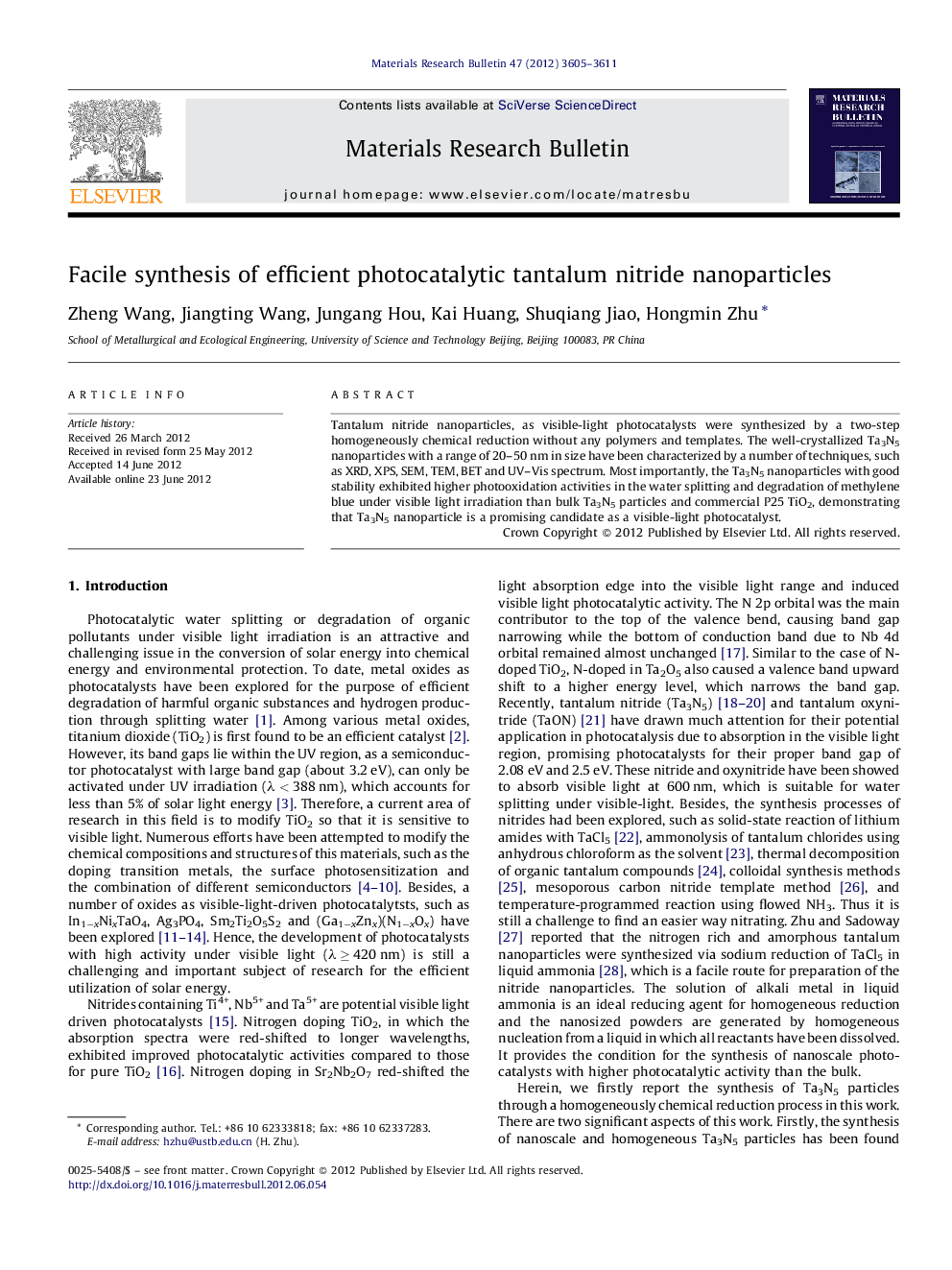| Article ID | Journal | Published Year | Pages | File Type |
|---|---|---|---|---|
| 1490150 | Materials Research Bulletin | 2012 | 7 Pages |
Tantalum nitride nanoparticles, as visible-light photocatalysts were synthesized by a two-step homogeneously chemical reduction without any polymers and templates. The well-crystallized Ta3N5 nanoparticles with a range of 20–50 nm in size have been characterized by a number of techniques, such as XRD, XPS, SEM, TEM, BET and UV–Vis spectrum. Most importantly, the Ta3N5 nanoparticles with good stability exhibited higher photooxidation activities in the water splitting and degradation of methylene blue under visible light irradiation than bulk Ta3N5 particles and commercial P25 TiO2, demonstrating that Ta3N5 nanoparticle is a promising candidate as a visible-light photocatalyst.
Graphical abstractTantalum nitride nanoparticles as a visible-light-driven photocatalyst prepared by a novel homogeneously chemical reduction of tantalum pentachloride using sodium in liquid ammonia and the morphologies, visible-light photocatalytic properties and stability of tantalum nitride nanoparticles were investigated.Figure optionsDownload full-size imageDownload as PowerPoint slideHighlights► Tantalum nitride nanoparticles have been prepared by a homogeneously chemical reduction. ► The crystal structure of tantalum nitride was determined by Rietveld refinement and XRD patterns. ► The Tantalum nitride nanoparticle size was in the range of 20–50 nm. ► Much high photocatalytic activities of Ta3N5 nanoparticles were obtained under visible-light irradiation.
